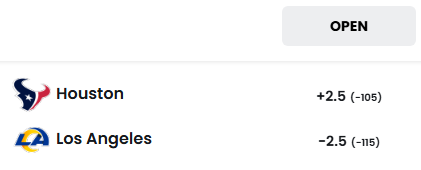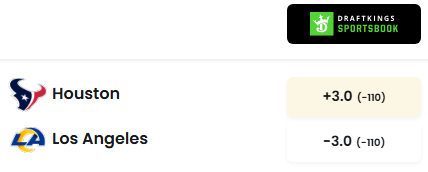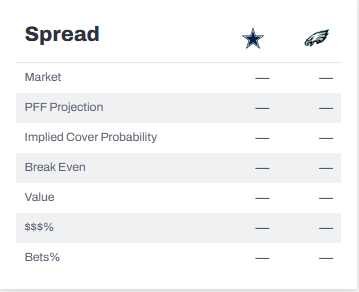PFF Betting 101: Sharp signs for bettors, red flags to avoid?

By
- Bet against the public: Lines often move throughout the week as casual bettors weigh in, typically backing popular narratives. Sharp bettors aim to capitalize by fading the public and taking advantage of the resulting line shifts.
- PFF empowers winning decisions: Stay tuned for more PFF betting tools soon to be introduced to all PFF+ subscribers.
- Subscribe to PFF+: Get access to player grades, PFF Premium Stats, fantasy football rankings, all of the PFF fantasy draft research tools and more!

Ready to go beyond the basics of NFL betting? We’ve already covered the fundamentals — from over/unders, parlays and prop bets to spreads and how to bet them — but that’s just scratching the surface. For new bettors looking to take the next step, understanding how sharp bettors approach the market is key.
This guide breaks down the signs sharps look for when attacking NFL lines and the red flags they steer clear of. So, whether you’re aiming to elevate your game knowledge or improve your profitability, this is your next step into the world of smart sports betting.
Lines courtesy of BettingPros.
What is a Sharp bettor?
Professional bettors who consistently beat the market by identifying mispriced lines and exploiting inefficiencies are commonly referred to as “sharps.” These bettors typically wager large sums on undervalued odds, often moving the market and prompting sportsbooks to adjust their lines in response.
However, there’s a common misconception that sharps win nearly every bet. In reality, sportsbooks are highly efficient, and even elite bettors typically win only slightly more than they lose. A sharp bettor is generally defined as someone with a long-term win rate of 55% or higher. Anything north of 60% is rare, and sustained success above 65% is virtually unheard of.
Some sharps build their own betting models to generate projections and set their own odds — bettors known as “originators” — while others excel at reading market trends and fading public sentiment.
While creating your own projection model might feel out of reach, there are several key habits and market signals that any bettor can learn to spot, providing a real edge in NFL betting.
Shop Early, And Shop Around
NFL betting lines are highly fluid, often shifting throughout the week as money pours in on both sides of the market. The line you see on Monday is rarely the one available by kickoff on Sunday. Sharp bettors typically focus on early-week value, targeting openers before sportsbooks make adjustments based on betting trends, injuries or public sentiment.
Take, for example, a 2025 Week 1 matchup between the Las Vegas Raiders and New England Patriots. The Patriots opened as 1.5-point home favorites, but the line has since moved to between -2.5 and -3 as offseason bets have continued to flow in. This type of movement is exactly what sharps watch for when determining whether to strike early or wait for a more favorable number.

Another key strategy sharp bettors rely on is line shopping — holding accounts with multiple sportsbooks to find the most favorable odds and lines across the market. This approach, often referred to as top-down betting, allows them to capitalize on discrepancies and maximize value.
For example, in the 2025 Week 1 opener between the Arizona Cardinals and New Orleans Saints, we see significantly different lines offered by three major sportsbooks. These variations highlight the importance of having access to multiple books, even a half-point difference can drastically impact long-term betting success.

Identifying the better team is just the beginning. Consistent betting success is found in the margins.
Bet Against the Public
Each week, social media lights up with posts about “the most bet teams of Week X,” spotlighting which sides the public is backing most heavily. But while these picks are popular, they can often be traps, and should be treated as red flags.
As noted earlier, betting lines shift throughout the week, especially as casual bettors place wagers based on narratives rather than numbers. Sharps, however, spot these trends early and strategically fade the public, capitalizing on the value created by line movement.
Take the Week 1 matchup between the Texans and Rams as an example:

The line opened with the Rams as 2.5-point favorites at home.
But as the offseason has progressed and more money has come in on Los Angeles, sportsbooks have adjusted accordingly, moving the line to Rams -3.

While the movement has been marginal, it could signal a window for sharps to capitalize by taking Houston at +3.
Using Tools to your advantage
While it can be challenging to track these indicators without closely monitoring the markets all week, PFF’s betting tools offer an at-a-glance snapshot of how each game is trending, helping bettors identify key market movements and value opportunities.
Every week, PFF will have betting information for every game of the NFL slate.

- Market: Gives a quick look at what Sportsbooks are setting the line at
- PFF Projection: Shows what PFF believes the line should be based on our data
- Implied Cover Probability: the percentage chance for each to cover the current line
- Break Even: How often the bet has to win to break even over time
- Value: The rate at which the bet retains value based on projections against the market
- $$$%: The percentage of money wagered on each side
- Bets%: The percentage of bets wagered on each side
Ready to roll
With that, you’re all set with the foundation to make more informed bets for the 2025 NFL season. From identifying line movement to spotting red flags and understanding where sharp money is going, this guide gives you the essential tools to start betting smarter.
PFF sits at the intersection of elite data and betting insight, empowering you to make sharper, more confident decisions. Be sure to follow along with the entire PFF betting team all season long, and stay tuned for the launch of new, exclusive PFF betting tools coming soon to all PFF+ subscribers.






